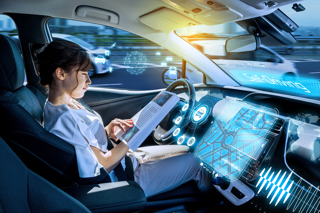By Jeremy Rochfort, national sales manager, Autoglass
There have never been more technologies available to monitor fleet driver behaviour and enhance safety. Ten years from now, the ‘internet of things’ revolution will have made it possible to understand your car health and book it in for whatever repairs it might need directly from your phone. Pioneers such as Tesla are developing software updates aimed at improving the performance – and residual value – of vehicles.
One subject raised at the recent Best of Belron conference in Lisbon (organised by the parent company of Autoglass), is the impact of new technology on the psychology of drivers.
A speaker from MIT highlighted that drivers who no longer have to pay as much attention to the road might fill their spare ‘cognitive capacity’ with distractions like eating or using phones behind the wheel, in the longer term becoming a less skilled back-up to the technology they increasingly rely on.
What’s clear is that drivers need to be able to trust safety features to use them effectively. Our own research shows the there is a job to be done to increase understanding of advanced driver assistance systems (ADAS), which support many different safety features such as autonomous braking and lane departure warnings to reduce the risk of collisions. We have found cases of drivers switching their ADAS off, failing to reap any safety benefits, or – worse – ignoring advice to get ADAS calibrated after an invasive windscreen replacement.
There appear to be multiple reasons behind this. Many drivers simply assume that everything is working correctly, yet even a one degree misalignment – undetectable without the required technical equipment – can cause the system to misjudge braking distances with potentially catastrophic consequences. More worryingly, our research found that more than half (53%) of drivers who contacted their car dealership for calibration were given inaccurate advice in relation to their problem.
The automotive industry as a whole is working hard to address these challenges, but the sheer variety of different technologies in different vehicle models also makes it important for fleet managers to consider what may be needed as part of repair and maintenance policies.


















Login to comment
Comments
No comments have been made yet.